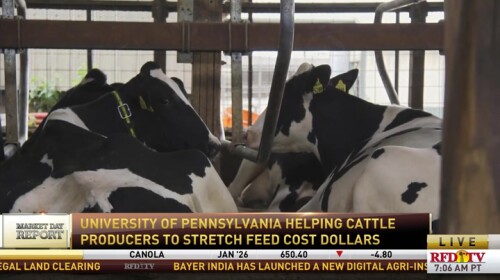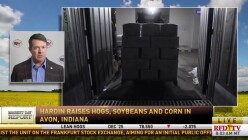Input Costs & Producer Inflation
With feed supplies running tight, producers can tap into some creative options, according to University of Pennsylvania Veterinarian and Professor Dr. Joe Bender.
The Court may limit emergency tariff powers, complicating a key bargaining tool; ag could see shifts in input costs and export dynamics as China, Brazil, and India talks evolve.
The Farm Bureau urges trade enforcement, biofuel growth, fair input pricing, and pro-farmer policy reforms to restore long-term certainty.
RaboResearch says China’s pivot from mass production to innovation-driven growth could reshape global pesticide supply chains — and influence prices and product access for U.S. farmers in the coming years.
Farmers for Free Trade Executive Director Brian Kuehl shares more about the tour to gather farmers’ insights on the economic challenges they face in the ag economy.
RFD-TV’s farm legal expert, Roger McEowen, digs into the details of both the LRP and the LGM programs, two essential risk management tools for cattle producers.
Persistently low Mississippi River levels are turning logistics challenges into pricing risks — tightening margins for grain producers and exporters across the heartland.
Caleb Ragland, president of the American Soybean Association (ASA), shares his reaction to news of soybean sales to China, which is considered both “welcome news” and a return to near-normal trade relations.
Rabobank’s outlook signals a tightening margin environment, emphasizing the need for cost control, trade stability, and clearer policy signals heading into 2026.
U.S. Senator Roger Marshall (R-KS) shares his perspective on the U.S.-China trade developments and their potential impact on American producers, farmers, and ranchers.
Input costs are top of mind for farmers, as they contribute to higher prices and smaller profits.
John Appel with the Farmers Business Network (FBN) joins us for a closer look at the 2026 Crop Protection Market Outlook Report.
Farmers display a unique optimism — planting with the expectation that weather, basis, and prices will improve by harvest — asserting that the profession is an identity, not just a job.
Margin Protection and the new MCO add county-level margin tools — with earlier price discovery, input cost triggers, and high subsidy rates — to complement on-farm risk plans for 2026.
“Farmers for Free Trade” warns that disaster is brewing as President Trump’s trade policy is causing farm input costs to rise even more.
Beef industry groups seem to agree — market-based pricing, not federal intervention, best supports rancher livelihoods and long-term beef supply stability.
Southern farms are deepening online engagement for cost savings and market access, while higher-cost precision technologies face renewed scrutiny amid tight budgets.
NEFB President Mark McHargue provides an update from the Husker State, where farmers are working hard to bring in one of the largest harvests in recent years.
Having a good read on fuel prices is a must during harvest, but one analyst says grain farmers should also be watching the crude oil markets.
National Farmers Union (NFU) President Rob Larew discusses the urgent need for aid as farm families face mounting input costs and long-term market uncertainty.
The FAA’s proposed rule to allow drones to operate beyond visual line of sight (BVLOS) could soon revolutionize how farmers and ranchers manage their land.
Nick Andersen, Nationwide’s VP of Agribusiness Claims, shares tips for managing weather-related risks in agriculture using their new Hail and Wind Alert Program.
























